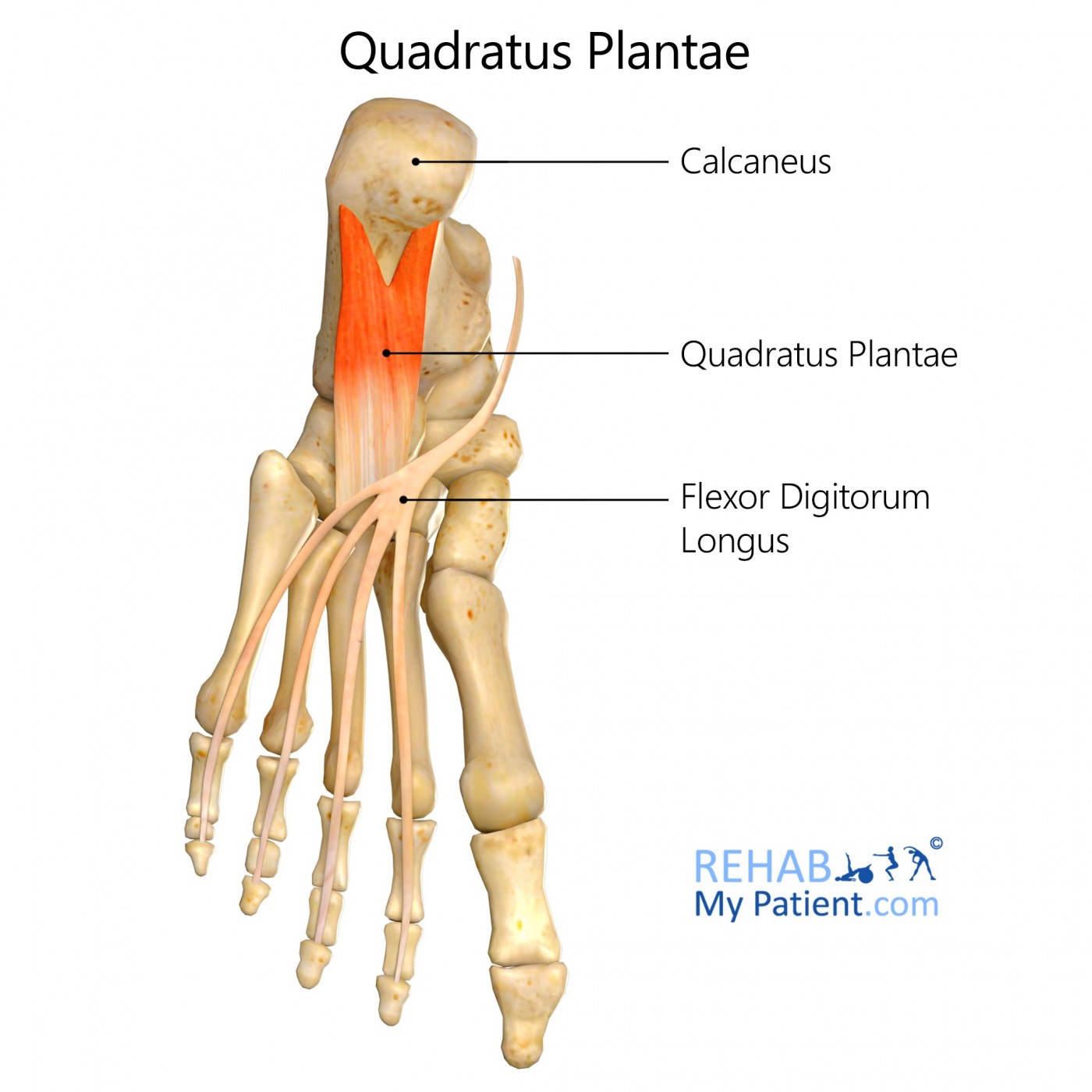
General information
The quadratus plantae is separate from all of the muscles in the first layer of the foot from the plantar vessels and nerve. It works by aiding in the flexing of the second to the fifth toes. It is one of the few muscles within the foot that does not have a homologue within the hand.
Literal meaning
Square muscle of the sole of the foot.
Interesting information
The quadratus plantae is what provides stability in the foot. If the muscle were not present, the foot would be weak and unstable, which could result in caving of the joints and inability to walk properly. Quadratus plantae injuries are indicated by sharp pain or sensation of numbness in the heel. Injuries to this muscle are found in those who wear shoes that are not properly fitted, runners who do not wear shoes that cushion the foot or those who run barefoot for extended periods of time. Common treatments for injuries to quadratus plantae include icing the affected area, anti-inflammatory medication, stretches, and ensuring proper footwear is worn.
Origin
Long plantar ligament and the distal surface of the lateral head.
Concave medial surface in the medial head.
Insertion
Lateral edge in the flexor digitorum longus tendon.
Function
Aids in flexion of the small toes through correction of the oblique vector for the flexor tendon crossing the plantar surface in the foot.
Nerve supply
Lateral plantar nerve S1-S3.
Blood supply
Medial artery.
Lateral plantar artery.
Small branches of the arterial and plantar arch.

Relevant research
The comparative anatomy of quadratus plantae was examined, as phylogenetic evidence suggests this muscle is getting bulkier, indicating it plays an important role in the walking process. The study cites evidence from electromyographic studies which suggest the quadratus plantae is a primary toe flexor in voluntary movements. The study also found it probable that quadratus plantae is an intrinsic evertor of the foot and resists extension of the toes during the stance phase of locomotion, increasing foot stability.
Sooriakumaran P, Sivananthan S. 2005. Why does man have a quadratus plantae? A review of its comparative anatomy. Croat Med J. 2005;46(1):30?35.
Quadratus plantae exercises

Single leg balance
Begin the exercise using a flat surface. Lift one of the legs and balance on the other one for as long as possible. Once the exercise is mastered, progress by performing it while the eyes are closed using a balance board. Repeat on the other leg. Perform three sets on both sides.
Flexion exercises
Tie an end of the band to a heavy object at floor level. Tie the other end to one of your ankles. Stand facing away from the location where the band is tied. With the band taut, bring the leg forward keeping the knee straight as far as possible. Hold the arms out to the side, or utilise a chair or other stable item for balance. Perform 10 repetitions on the first side, then repeat on the other. Do this exercise for three sets on each side.
Sign Up
Sign up for your free trial now!
Get started with Rehab My Patient today and revolutionize your exercise prescription process for effective rehabilitation.
Start Your 14-Day Free Trial